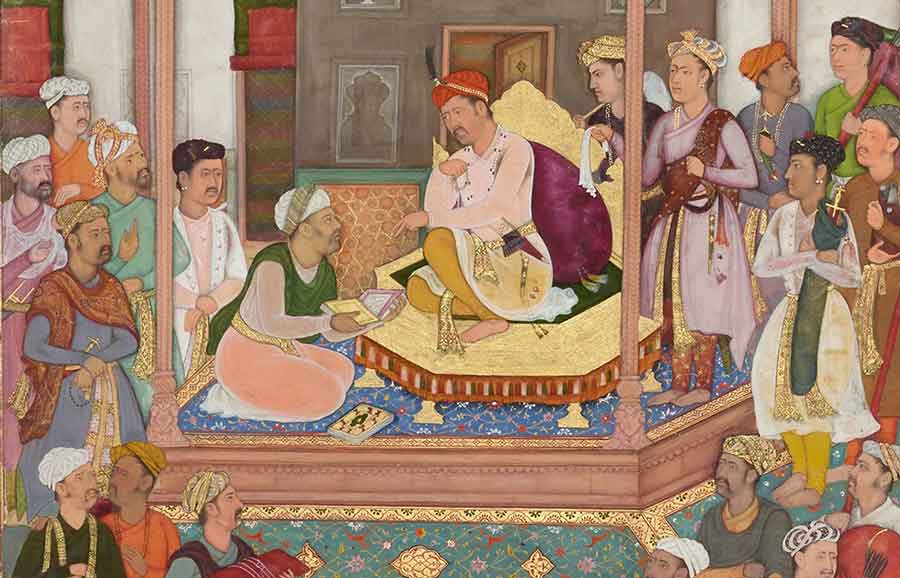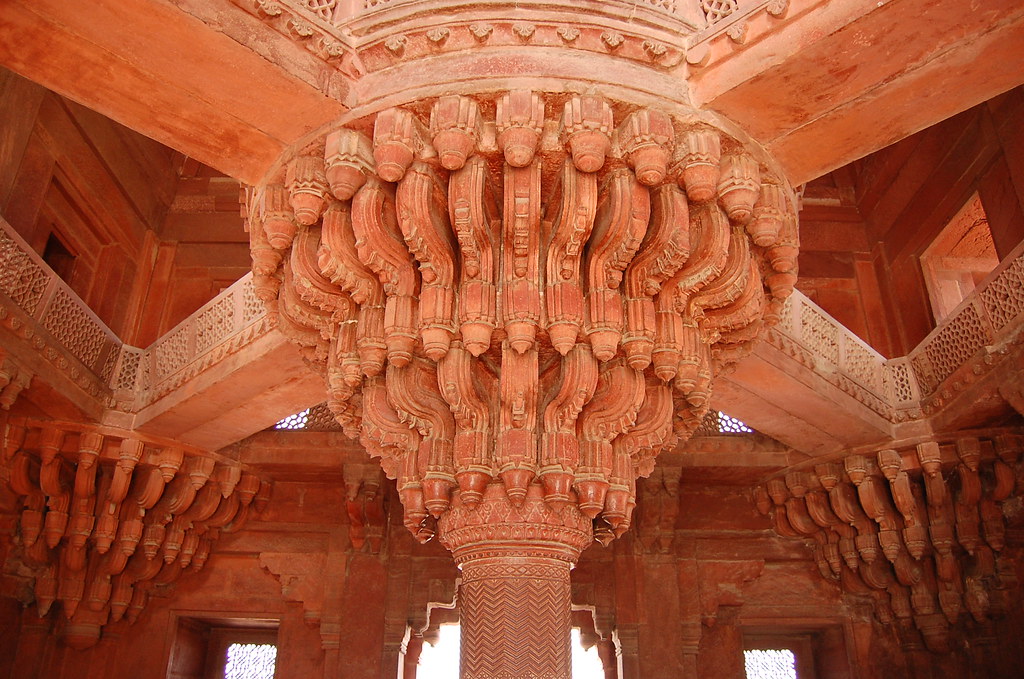
The Legend of Akbar's Navratnas
According to popular belief, emperor Akbar had nine extraordinary people at his court known as the Nine Jewels/Gems or Navratnas. Here's the list of Akbar's Navratnas from Wikipedia: Abul Fazl, his brother Faizi, Miyan Tansen, Raja Birbal, Raja Todar Mal, Raja Man Singh, Abdul Rahim Khan-i-Khana, Fakir Aziao-Din and Mulla Do-Piyaza. Vincent.

9 jewels of akbar
The Nine Gems of Akbar. by Dr. Neria H. Hebbar. The Mughal Emperor Akbar (1543-1605), though illiterate and unable to read or write, demonstrated a remarkable appreciation of other religious thoughts. He was also a connoisseur of music and fine arts. The Mughal architecture, that later culminated in the glorious Taj Mahal, found its beginnings.

Nine gems of Mughal emperor Akbar (India) नवरत्न = navaratna = nine
October 27, 2017. Mughal Emperor Akbar the Great wasn't the first one to start this tradition of honouring learned men as the nine jewels of his kingdom - through his navratnas are certainly the most famous. D eemed the nine most extraordinary and learned people in the court of a ruling emperor, the term 'navratnas' or nine gems came.

Navratnas /Nine Gems of Akbar II अकबर के नवरत्न II YouTube
The Navratnas of Akbar were the Nine Jewels in the court of Emperor Akbar. Akbar, the great Mughal emperor, is known for his impressive administration, cultural patronage, and his court filled with talented individuals.. In this blog, we will mention all the nine gems present in the court of Emperor Akbar as well as provide you with a brief.

The Fascinating History Behind the Nine Gems of Mughal Emperor Akbar
Nine Gems Of Akbar: Meet Navratnas Of Mughal Emperor's Court . Abul Fazl. Abul Fazl was known for his expertise in political affairs and his scholarly work, Akbarnama, which chronicled the reign of Akbar. Birbal. Birbal, whose real name was Mahesh Das, was Akbar's Foreign Minister. He was known for his wit, wisdom, and problem-solving skills.

9 jewels of akbar
In 1588, Faizi became the poet laureate of Akbar's court, joining the ranks of the nine gems and going on to complete two of his works, the Markaz ul-Advar and the Nal o Daman. The Nal o Daman was completed in 1594 as an answer to Nizami's Makhzan ol-Asrarabd, or Layla and Majnun.

9 Gems of Great Mughal Emperor Akbar or Navratnas YouTube
Easy way To Remember Nine Gems Navratna of AkbarFor More Difference Between Video Click Belowhttps://www.youtube.com/playlist?list=PLba8yqVy07INgHVYkn9UDXaIj.

Trick to remember the Name of Nine Gems (Navratna) of Akbar's. YouTube
The "Nine Gems", or Navaratnas Nauratan, refers to 9 members on the court of the Mughal Emperor Akbar. Emperor Akbar had an affinity for the arts and academia, which influenced his choices for the royal court. The Nine Gems were made up of artists, musicians, writers, finance ministers, warriors, and poets. 9. Raja Man Singh I -.

PPT The Mughals AKBAR THE GREAT PowerPoint Presentation ID2218870
The nine gems or navratnas of Akbar. Abul Fazl. As a young man, Abul Fazl entered Akbar's court and quickly put his prodigious brain to support and encourage Akbar's philosophical and religious endeavours. Abul Fazl was the grand vizier of Akbar's court and one of his most cherished courtiers.

The Nine Gems of Akbar’s Court gemstone, Akbar The court of King
Nine Gems of Akbar's Court. Emperor Akbar is known to be the Greatest of Mughal Emperors of all times. During his reigning period, he extended the Mughal dynasty to such soaring places in the Indian subcontinent. No other ruler could achieve what he did back then. Also, the ruling period of Emperor Akbar is known to be a flourishing era for.

The Navratnas Nine Jewels of Emperor Akbar’s Mughal Court Ancient
Navaratna ( Sanskrit: नवरत्न) is a Sanskrit compound word meaning "nine gems " or "ratnas". Jewellery created in this style has important cultural significance in many southern, and south-eastern Asian cultures as a symbol of wealth, status, and is claimed to yield talismanic benefits towards health and wellbeing.

Nine Gems Oct 2007 Akbar's nine gems got together in this… Flickr
Khan-i-Azam or Kotaltash was one of the leading nobles and also foster brother of Akbar. He also served as Subedar of Gujarat. About Mullah Do Piaza. We note here that most sources also mention the name of Mullah Do Piaza, an intelligence advisor to Akbar, as one of his nine gems. Some claim that Mullah Do Piaza is a fictional character.

From Birbal to Tansen List of Mughal emperor Akbar’s navratnas or nine
9. Abdul Rahim Khan-I-Khana. Abdul Rahim Khan-I-Khana, a celebrated figure among Akbar's Navratnas, was a poet, dewan (minister), and esteemed member of the Mughal court. Birth and Lineage: Abdul Rahim Khan-I-Khana was born in the town of Khan Khana, which is now known as Nawanshahr in Punjab, India.

9 GEM'S OF AKBAR COURT YouTube
Historians have slammed Agra Development Authority's move to install the statues of nine gems of Mughal emperor Akbar's court in Fatehpur Sikri. Agra Divisional Commissioner and Agra Development Authority (ADA) Chairman, Pradip Bhatnagar had taken a decision in March, 2014 to install the statues as an added attraction in Fatehpur Sikri.

Chandra ️ Nandni on Twitter "All 9 gems of ShehenshaJalaludinMohomad
Navratna of Akbar refers to the nine eminent personalities who served as advisors to the Mughal emperor, Akbar, during his reign in India from 1556 to 1605. These individuals were considered the most brilliant minds of their time and were instrumental in developing various aspects of India under the Mughals, including administration, culture, military, and art.

Simple trick to memorize Akbar's nine gems YouTube
Nauratan/Navaratnas (Sanskrit dvigu nava-ratna, Sanskrit pronunciation: [nɐʋɐrɐt̪nɐ]) (transl. Nine gems) or Nauratan was a term applied to a group of nine extraordinary people in an emperor's court in India. The well-known Navaratnas include the ones in the courts of the legendary emperor Vikramaditya, the 16th-century Mughal emperor Akbar, and the 18th-century feudal lord Raja.